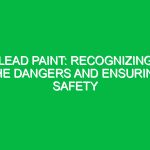Introduction
In today’s fast-paced work environments, the importance of Health, Safety, and Environment (HSE) strategies cannot be overstated. HSE frameworks are designed to protect the well-being of employees while ensuring compliance with legal and regulatory standards. These strategies not only safeguard health and safety but also promote environmental sustainability. By implementing effective HSE practices, organizations can create safer workplaces, reduce risks, and enhance overall operational efficiency.
This article delves into essential HSE strategies that can boost workplace safety and compliance, exploring the key components, best practices, and real-life examples that highlight the significance of these systems.
Understanding HSE
HSE encompasses a broad range of policies, practices, and regulations aimed at promoting health, safety, and environmental stewardship in the workplace. The primary goal of HSE is to prevent workplace injuries, illnesses, and environmental hazards.
When discussing HSE, several critical elements come into play:
- Health: Refers to the physical and mental well-being of employees.
- Safety: Involves practices and policies designed to prevent accidents and injuries.
- Environment: Focuses on minimizing the environmental impact of workplace operations.
By prioritizing HSE, organizations can foster a culture of safety, compliance, and responsibility, ultimately contributing to their long-term success.
Key Aspects of HSE Strategies
Implementing effective HSE strategies involves several key aspects, each playing a crucial role in ensuring workplace safety and compliance.
1. Risk Assessment and Management
A fundamental component of any HSE strategy is the identification and management of risks. Organizations must conduct comprehensive risk assessments to identify potential hazards that could impact employee safety and health.
- Identify Hazards: Assess potential physical, chemical, biological, and ergonomic hazards present in the workplace.
- Evaluate Risks: Determine the likelihood and severity of incidents associated with identified hazards.
- Implement Controls: Develop strategies to mitigate risks, such as implementing safety protocols, providing personal protective equipment (PPE), and training employees.
For instance, a manufacturing plant might identify machinery as a potential hazard. By evaluating the risk of equipment malfunction, the organization can implement preventive maintenance schedules and employee training to reduce incidents.
2. Training and Development
Investing in training and development is essential for cultivating a workforce that prioritizes health and safety. Regular training programs should cover various topics, including:
- Understanding workplace hazards
- Emergency response procedures
- Proper use of PPE
- Health and wellness initiatives
A well-trained workforce is more likely to recognize and respond to potential hazards, fostering a culture of safety. For example, an oil and gas company that provides comprehensive training on emergency response can significantly reduce the likelihood of accidents during critical operations.
3. Safety Culture and Leadership Commitment
Creating a strong safety culture begins with leadership commitment. When leaders prioritize HSE, it sets the tone for the entire organization.
- Visible Leadership: Leaders should actively participate in safety initiatives and demonstrate their commitment to HSE policies.
- Open Communication: Encourage employees to report hazards or unsafe practices without fear of retribution.
- Employee Involvement: Involve employees in safety committees and decision-making processes to foster a sense of ownership.
For instance, a construction company that involves workers in safety planning and decision-making is more likely to see improved compliance and safety outcomes.
4. Incident Reporting and Investigation
An effective HSE strategy includes a robust incident reporting and investigation process. Organizations should establish clear procedures for reporting accidents, near misses, and safety concerns.
- Encourage Reporting: Create a non-punitive environment that encourages employees to report incidents.
- Thorough Investigations: Conduct comprehensive investigations to identify root causes and prevent recurrence.
- Implement Corrective Actions: Use findings from investigations to inform future safety measures and training.
For example, if a worker reports a near miss involving a slip hazard, investigating the incident can lead to improved housekeeping practices and better floor maintenance protocols.
5. Compliance with Regulations and Standards
Compliance with local, national, and international regulations is vital for HSE strategies. Organizations must stay informed about relevant laws and standards, such as OSHA regulations in the United States or ISO 45001 for occupational health and safety management systems.
- Regular Audits: Conduct regular audits to ensure compliance with regulations and identify areas for improvement.
- Documentation: Maintain accurate records of training, incidents, and compliance efforts to demonstrate adherence to standards.
- Stay Updated: Keep abreast of changes in regulations and adjust policies accordingly.
For instance, a chemical manufacturing facility must comply with regulations set by the Environmental Protection Agency (EPA) to manage hazardous materials effectively.
Benefits of Effective HSE Strategies
Implementing robust HSE strategies yields numerous benefits for organizations, including:
- Reduced Incidents: A proactive approach to workplace safety can lead to fewer accidents and injuries.
- Improved Employee Morale: A safe work environment fosters job satisfaction and employee retention.
- Enhanced Reputation: Organizations known for strong HSE practices attract top talent and build customer trust.
- Regulatory Compliance: Effective HSE strategies minimize the risk of legal penalties and fines.
Consider a logistics company that implements HSE strategies and experiences a significant reduction in workplace injuries. Not only does this improve employee morale, but it also enhances the company’s reputation within the industry.
Real-Life Examples and Case Studies
Examining real-life examples can provide invaluable insights into the effectiveness of HSE strategies.
Case Study: DuPont
DuPont, a global leader in science and technology, has long been recognized for its commitment to safety. The company implemented a behavior-based safety program that emphasizes the importance of individual responsibility in maintaining a safe work environment. This initiative led to significant reductions in workplace injuries and reinforced a culture of safety across the organization.
Hypothetical Scenario: Construction Company
Imagine a construction company that regularly evaluates its HSE practices. After conducting a risk assessment, the management identifies that the scaffolding used on-site poses a significant risk. They decide to invest in advanced scaffolding technology and provide additional training for workers. As a result, the company experiences a decrease in falls and accidents, demonstrating the effectiveness of their HSE strategy.
Conclusion
In conclusion, implementing essential HSE strategies is critical for boosting workplace safety and compliance. From conducting thorough risk assessments to fostering a strong safety culture, organizations can significantly enhance their health and safety measures.
As the workplace continues to evolve, prioritizing HSE will not only protect employees but also contribute to environmental sustainability and industry reputation. It is imperative for organizations to continually evaluate and adapt their HSE strategies to meet the changing landscape of workplace safety and compliance. By doing so, they can ensure a safer, healthier, and more sustainable future for all.


